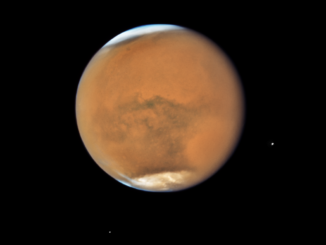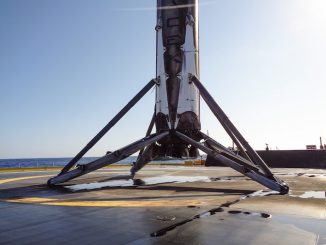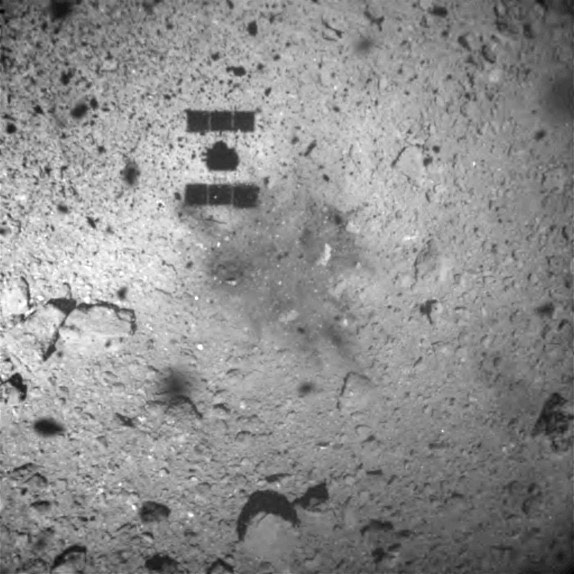
Japan’s Hayabusa 2 spacecraft briefly landed on an asteroid Thursday more than 200 million miles from Earth and fired a bullet to scoop up a rocky sample, successfully accomplishing one of the mission’s most challenging maneuvers before returning the asteroid specimen to scientists on the ground in December 2020.
The spacecraft lingered on Ryugu’s surface for just a few moments before firing thrusters to climb away from the asteroid. Hayabusa 2’s ground team in Sagamihara, Japan, celebrated as radio signals beamed back from the probe indicated the touch-and-go maneuver went off without a hitch, delighting engineers who painstakingly planned — then re-planned — the spacecraft’s pinpoint landing.
“Mankind’s hand has reached a new star today,” said Yuichi Tsuda, Hayabusa 2’s project manager at the Japan Aerospace Exploration Agency, or JAXA, through a translator. “JAXA was successful in the operation (and) touchdown of Hayabusa 2 at Ryugu, and sample collection from Ryugu.”
Operating on its own, Hayabusa 2 descended toward Ryugu at a glacial pace Thursday, hitting its expected altitude and speed marks before contacting the surface at 2229 GMT (5:29 p.m. EST). Nineteen minutes later, a shift in the signal coming from Hayabusa 2 indicated it reached the surface and started its ascent, prompting applause from pensive scientists in the control room.
The probe’s navigation system autonomously tracked the location of a target marker deployed onto the asteroid’s surface, allowing Hayabusa 2 to fire its control jets, steering the craft toward a tight landing zone surrounded by hazardous boulders.
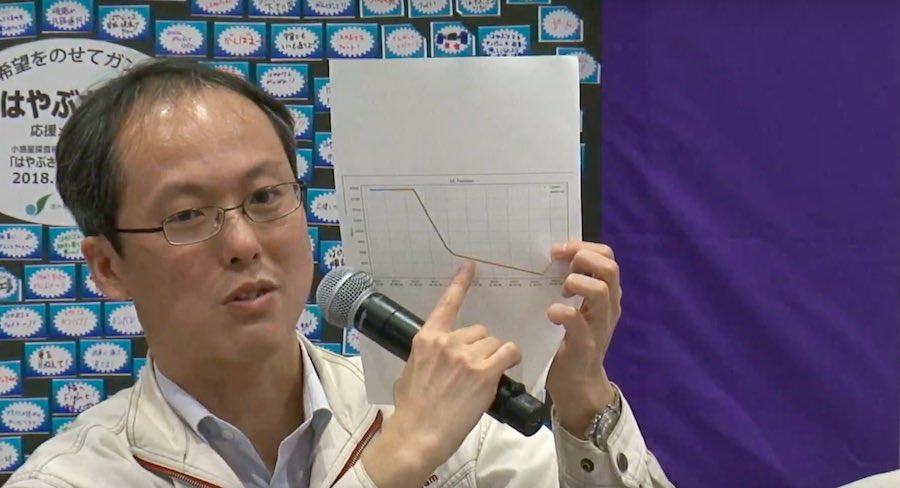
In a press conference a few hours later, mission officials from JAXA confirmed the spacecraft performed flawlessly during the touch-and-go landing.
Telemetry from Hayabusa 2 showed an increase in temperature inside the compartment housing the 0.2-ounce (5 gram) tantalum projectile that shot into the asteroid. The probe uses explosives to fire the bullet, and mission managers said the temperature rise indicated the device functioned as intended.
The projectile was supposed to fire when a sample horn extending from Hayabusa 2 touched the surface of Ryugu. Rock and powder blasted away by the projectile’s impact was expected to funnel through the sample horn into one of three chambers inside the spacecraft’s return capsule, which will bring the samples back to Earth in 2020.
“After confirming the data sent out from Hayabusa 2, we were able to confirm that the sequence for touchdown of Hayabusa 2, including the projectile firing to collect samples, was implemented, and Hayabusa 2’s status is normal,” Tsuda said in a press conference at the Sagamihara control center.
Officials planned to seal the chamber containing the samples from Thursday’s landing, ensuring the material remains uncontaminated during the journey back to Earth.
Hayabusa 2 is Japan’s second mission to collect samples from an asteroid for return to Earth.
A predecessor probe named Hayabusa flew to asteroid Itokawa, but only gathered microscopic specimens from the object after running into numerous problems, including a malfunction in its own projectile firing system, a fuel leak, and reaction wheel failures. Hayabusa, which means “peregrine falcon” in Japanese, returned the little asteroid material it collected back to Earth in June 2010.
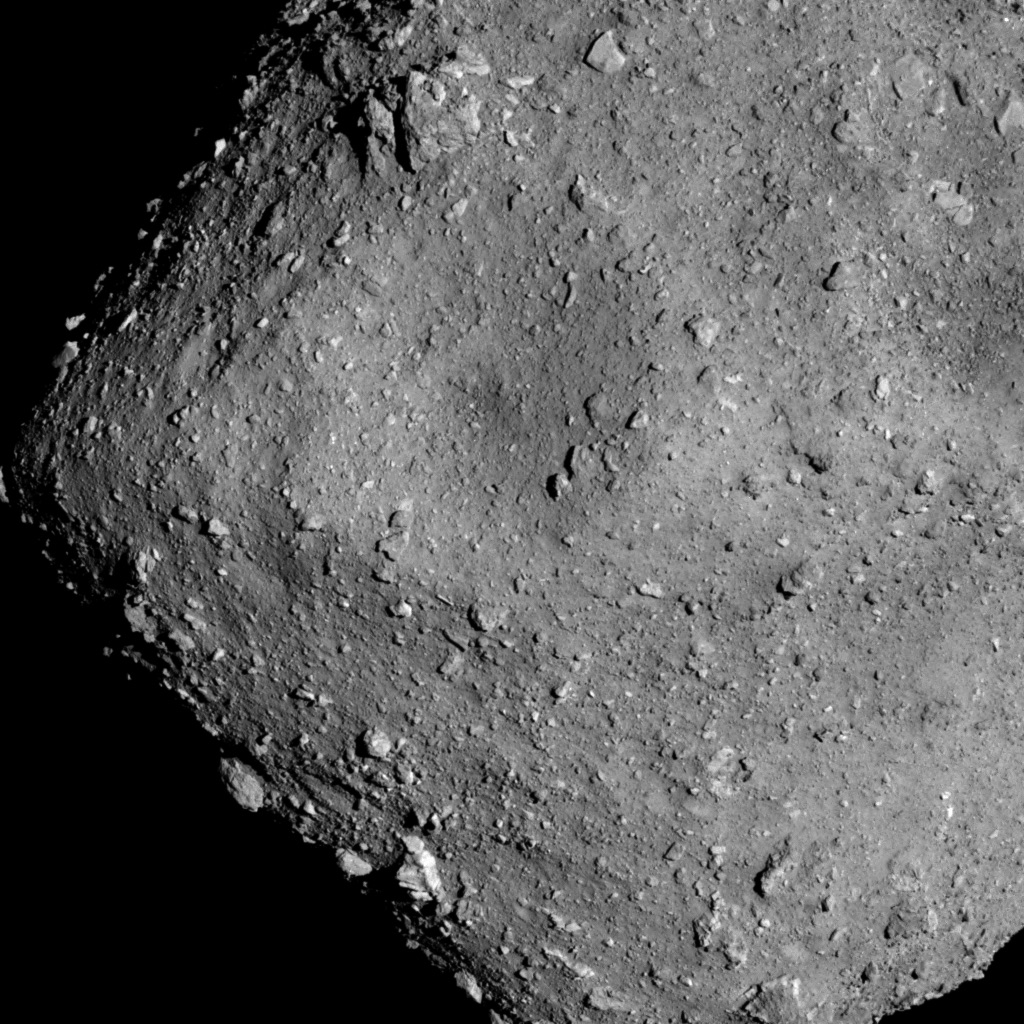
Ryugu is shaped like a spinning top, with an average diameter of nearly 3,000 feet (900 meters). Its gravity field is thousands of times weaker than Earth’s, allowing Hayabusa 2 to fly around the asteroid with minimal fuel.
Scientists classify Ryugu as a C-type asteroid, meaning it is rich in carbon, the basic building block of organic molecules. Researchers are eager to get pristine samples of the asteroid to analyze in laboratories, and search for clues about the origin of water and life on Earth.
Named for a dragon’s palace in a famous Japanese fairy tale, asteroid Ryugu completes one circuit of the sun every 1.3 years. Its path briefly brings it inside Earth’s orbit, making Ryugu a potentially hazardous asteroid.
While Hayabusa 2 explores Ryugu, NASA’s OSIRIS-REx spacecraft is surveying another asteroid — named Bennu — ahead of its own sampling attempt next year. Like Ryugu, Bennu is a carbon-rich asteroid that regularly crosses Earth’s orbit.
OSIRIS-REx will bring home at least 60 grams, or 2.1 ounces of samples from Bennu in 2023, while Hayabusa 2 could return to Earth with at least 100 milligrams of asteroid material. Scientists are hopeful both missions will come back with much more.
Tsuda said engineers were not immediately sure how much sample Hayabusa 2 collected Thursday. But officials are convinced the projectile worked as expected, and Tsuda said he had the “highest expectation” that Hayabusa 2 snared a “decent amount of sample.”
Teams from the Hayabusa 2 and OSIRIS-REx missions are collaborating in their asteroid exploration endeavors. JAXA and NASA have agreed to share asteroid samples brought to Earth by Hayabusa 2 and OSIRIS-REx, and three U.S. scientists on the OSIRIS-REx team are assigned as co-investigators on the Japanese mission. In return, three Japanese researchers formally joined the OSIRIS-REx team.
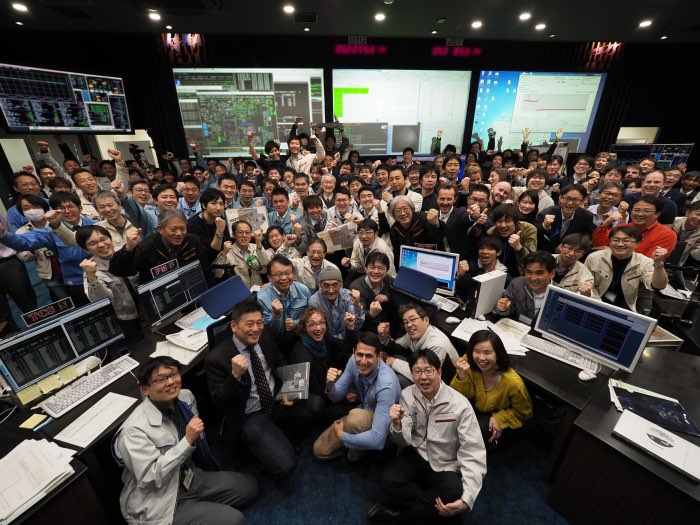
Hayabusa 2 launched on a Japanese H-2A rocket on Dec. 3, 2014, and thrust toward its asteroid target using ion engines, arriving in Ryugu’s vicinity last June.
The spacecraft dropped a pair of Japanese robots to hop across Ryugu’s surface in September, then released a European mobile scout to land on the asteroid in October. The miniature landers became the first mobile vehicles to explore the surface of an asteroid. All three robots returned imagery and science data.
Mission managers hoped to grab the first sample with Hayabusa 2 in late October, but officials postponed the descent to complete additional analysis and surveys after the spacecraft found the asteroid is more rocky and rugged than expected. Managers decided to deploy a target marker at their preferred landing site for Hayabusa 2’s first sampling attempt, helping the spacecraft navigate a narrow corridor to safely reach a location free of boulders, which could have endangered the mission.
“Ryugu turned out to be more difficult than we expected, so we decided to deploy all kinds of technologies that are available,” Tsuda said.
Hayabusa 2 could try to gather two more samples from other locations on Ryugu before departing the asteroid in November or December. The spacecraft must begin its journey back to Earth by the end of the year to return home in December 2020, when Hayabusa 2 will release a sample carrier to re-enter the atmosphere and parachute to a landing in Australia.
Tsuda aims to complete Hayabusa 2’s critical operations at the asteroid by June or July, when Ryugu makes its closet approach the sun in its 1.3-year orbit.
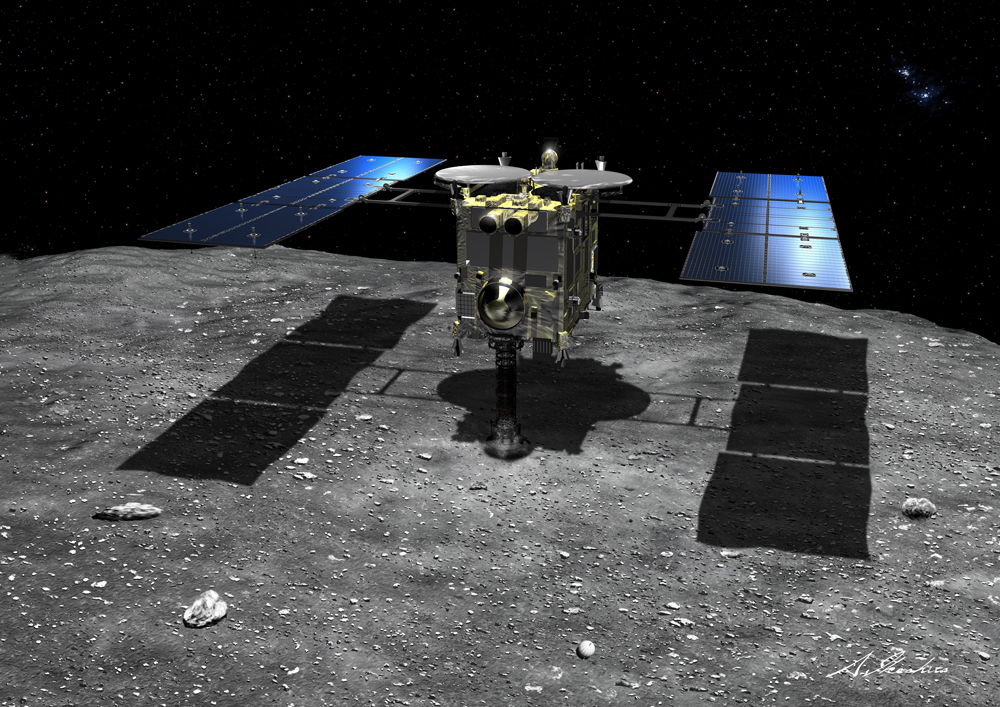
On one of the sampling maneuvers, Hayabusa 2 will will fire a copper plate — 400 times more massive than the tantalum bullet used Thursday — to carve out a crater on the asteroid, allowing the spacecraft to snag material from underneath Ryugu’s surface. The underground sample could be valuable to scientists because material there has not been exposed to the particles and radiation that bombards the asteroid’s surface.
“We have to work out what to do about the two touchdowns which are still scheduled,” Tsuda said.
“At the present point in time, we cannot formulate a schedule,” Tsuda said. “We don’t want to remain idle for a month. That is not our plan. The state of the (spacecraft) is such that it is in top shape. Maybe every two weeks or three weeks, there are critical operations we wish to conduct.”
Takanao Saiki, Hayabusa 2’s project engineer and flight director, said the release of the copper impactor to create a crater on Ryugu will be one of the major highlights of the mission.
“Just as big as the touchdown operation, and it is quite risky,” Saiki said Thursday. “Honestly speaking, (the impactor) is really a challenge, but all of the team members have been using their brains in the touchdown operation up until today … We would like to celebrate the success today, but from tomorrow we would like to start preparing for (the impactor).”
“This has stepped up our momentum, but we have to remain cautious,” Saiki said.
Email the author.
Follow Stephen Clark on Twitter: @StephenClark1.

